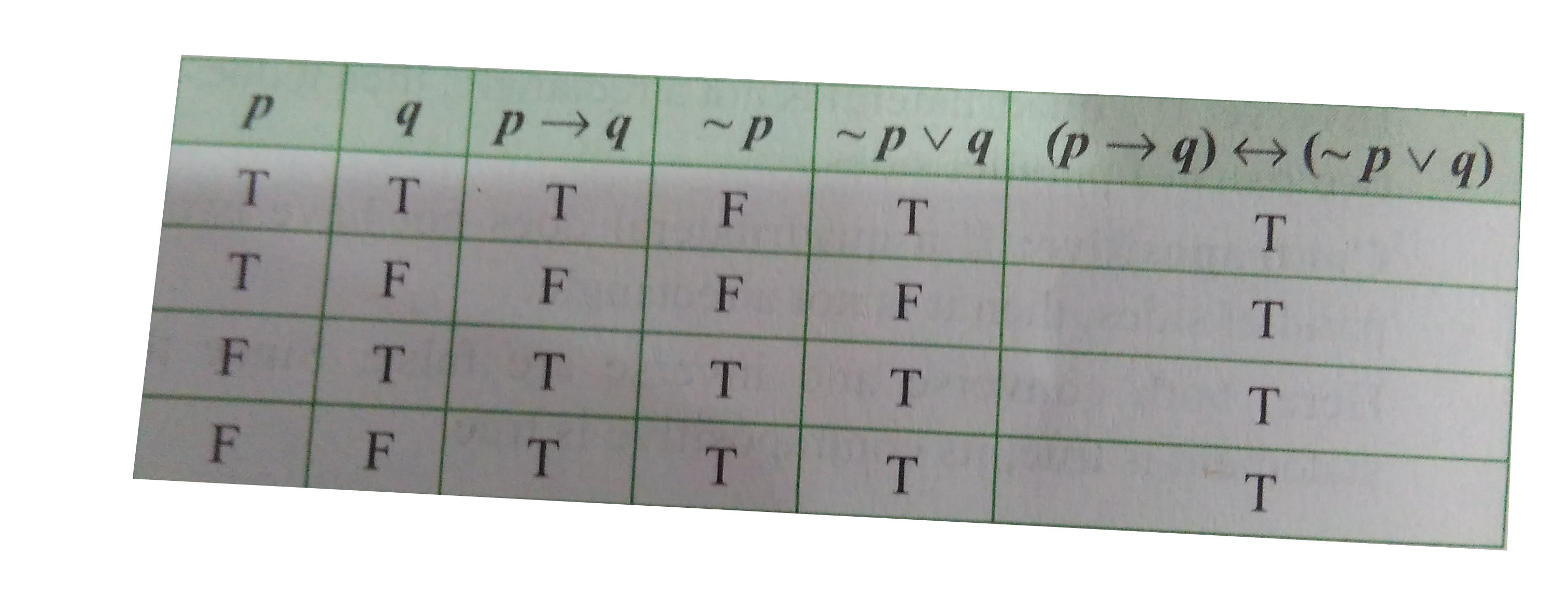In the truth table for the statements (p→q)↔(~p∨q), the last column has the truth value in the following order
A
TTTT
B
FTFT
C
TTFF
D
FFFF
Video Solution
Text Solution
The correct Answer is:A
|
Topper's Solved these Questions
- MATHMETICAL REASONINGBOOK - CENGAGECHAPTER - MATHMETICAL REASONINGEXERCISE - JEE Previous Year
10 Videos
- MATHMETICAL REASONINGBOOK - CENGAGECHAPTER - MATHMETICAL REASONINGEXERCISE - Exercise 10.2
5 Videos
- LOGARITHM AND ITS PROPERTIESBOOK - CENGAGECHAPTER - LOGARITHM AND ITS PROPERTIESEXERCISE - JEE Previous Year
5 Videos
- MATRICESBOOK - CENGAGECHAPTER - MATRICESEXERCISE - Solved Examples And Exercises
165 Videos
Similar Questions
Knowledge Check
In the truth table for the statement (~p⇒~q)∧(~q⇒~p), the last column has the truth value in the following order
ATTTFBFTTFCTFFTDTTTTIf the truth value of the statement p→(~q∨r) is false (F), then the truth values of the statements p,q and r are respectively
AT, T and FBT, F and FCT, F and TDF, T and TWhich of the following statement has the truth value F ?
AA quadratic equation has always a real rootBThe number of ways of seating 2 persons in two chairs out of n persons is P(n,2)CThe cube roots of unity are in GPDNone of the above
Write down the truth table for the compound statements :
(~p∨q)∧(~p∧~q)
View SolutionConstruct the truth table for the statement p→[q→(p∧q)]p→[q→(p∧q)]. Interpret the result.
View SolutionFrom the truth table of pvq and p∨~q
View SolutionWrite down the truth tables for the following statements :
(p∧q)⇒~p (ii)(p∧q)⇒(p∨q)
View SolutionIf p, q, r are the statements with truth values T, F, T respectively, determine the truth values of the following :
(1) ~(r∧~q)∨(p∧~r) (2) (r∧q)⇔(~q).
View Solution

